chrysanthemum, culture, flowers in japan
Chrysanthemum Symphony: Reveling in the Harmonious Dance of Nature’s Gift

Anna Ayvazyan
Posted on May 30, 2023
Share:
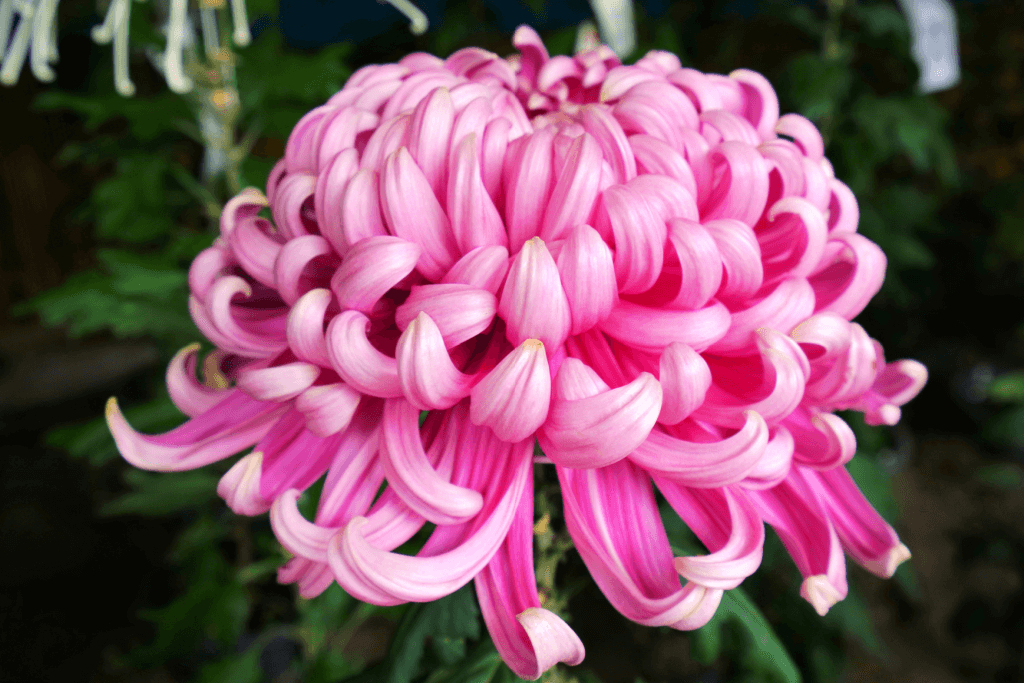
The chrysanthemum is one of Japan’s most famous flowers and the symbol of its Imperial family. People cultivated the chrysanthemum in China for centuries, and historians believe it came to Japan during the Heian period (794–1185). Initially, the flower served medicinal purposes, and the royal families in Japan believed it could potentially prolong their lives.
Eventually, people in Japan also found new ways to display chrysanthemum flowers in new ways. They started arranging them in different ways in flower beds or the shape of dolls. Moreover, the flower gained popularity, particularly in the early Edo period (1603–1868), as cultivators grew a more comprehensive range of varieties. They even sent some of these varieties to China, which inspired Chinese cultivators to grow the new types.

Generally, historians believe the Imperial crest began featuring chrysanthemum flowers around the Kamakura period (1185–1333). The emperor at the time, Go-Toba (r. 1183–98), liked the floral design of the flower and often used it. During the Meiji period (1868-1912), the imperial crest adopted a design that established a chrysanthemum flower with sixteen petals. This design now finds extensive use throughout Japan for various significant events and documentation.
The Significance of the Chrysanthemum in Japan
In Japan, the word for chrysanthemum is “kiku.” This word is used to describe the first line of a poem. However, it can also be used in several actions, such as “to ask,” “to listen,” and “to hear. It may be a coincidence, but for many, it reflects the importance of the flower in Japanese society and culture. In addition, the imperial family’s flower appears on many official objects in Japan.
Not to mention, it appears most notably on the Japanese passport and the fifty yen coin, referencing the imperial family. Outside representing the imperial family, it has other meanings too. The flower symbolizes longevity, rejuvenation, and the fall season.
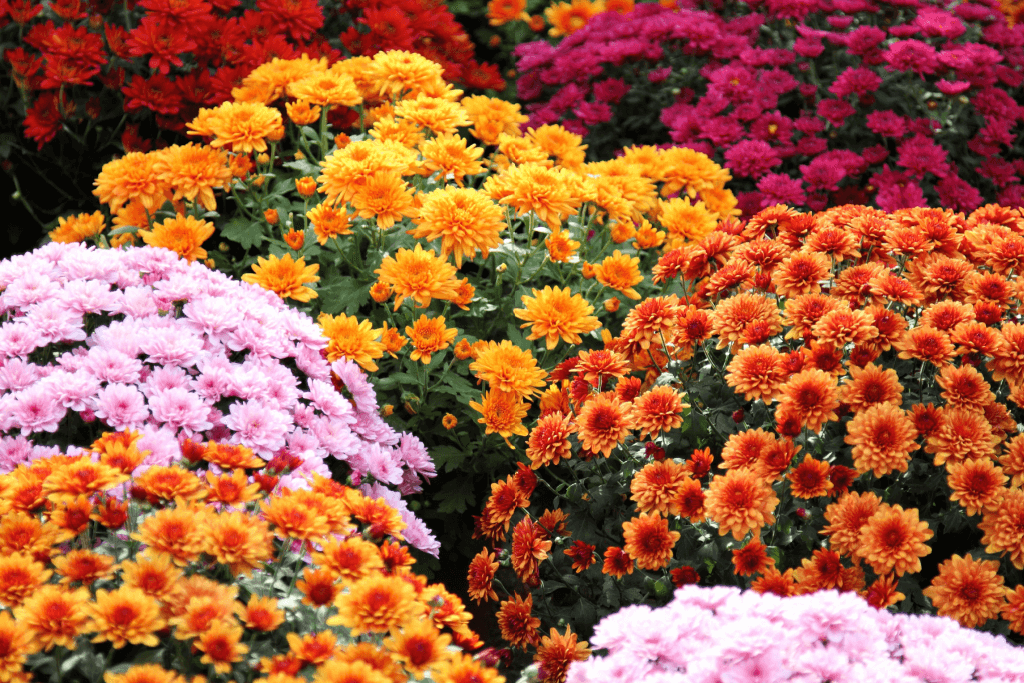
Are there any chrysanthemum festivals?
Yes! In Japan, people specifically celebrate the “Festival of Happiness,” a dedicated chrysanthemum festival held annually on September 9th. This event dates back to its establishment in 910 A.D. during ancient times when odd numbers held significance as symbols of good luck. As a result, the ninth day of the ninth month is highly auspicious. On this day, some shops and cafes may have special chrysanthemum-related drinks or sweets to celebrate.
Looking for some fantastic snacks this summer? Try Sakuraco! Sakuraco delivers traditional Japanese snacks, sweets, tableware, and more from local Japanese makers right to your door, perfect for a pleasant snack time at home!
What do the different colors of the chrysanthemum mean?
Chrysanthemums, with their diverse colors, hold various meanings. In Japan, these beautiful flowers are rich in symbolism. Similarly, each color is significant, adding depth and intention to the messages conveyed through these beautiful blooms.
Pink chrysanthemums
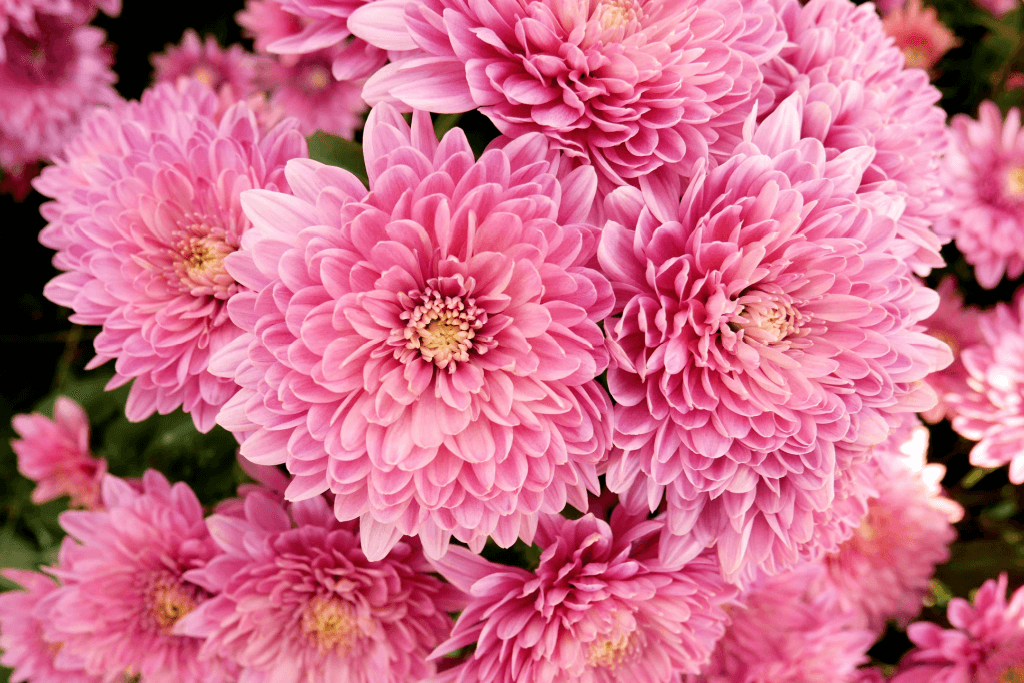
Pink chrysanthemums symbolize sweet dreams and are suitable for someone you like or love, signifying a positive gesture. Generally, it’s a good practice, especially when confessing one’s love. People commonly adorn children’s jinbei or yukata with pink chrysanthemums.
Purple chrysanthemums
During ancient times, purple chrysanthemums symbolize nobility, exclusively worn by individuals of high ranks. However, today, they mean thoughtfulness and care. The color represents confidence and signifies concepts like “dreams come true,” “love wins,” and “trust me.” Some people embellish their homes with purple chrysanthemums to attract good luck and positive vibes.
White chrysanthemums
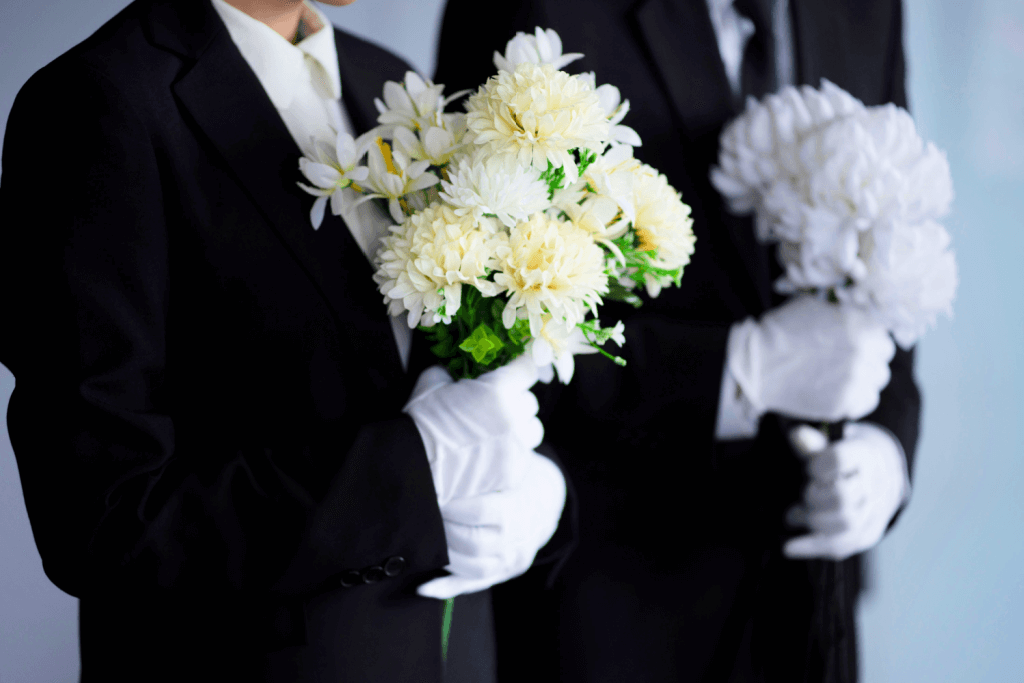
White chrysanthemums symbolize purity and cleanliness. They represent “truth,” “sincere heart,” and “adoration,” and people even use them in wedding bouquets. However, the white chrysanthemum is also present at funerals and memorials. So it’s best not to give a white chrysanthemum as a casual gift to someone.
Yellow chrysanthemums
Yellow chrysanthemums have a mixture of meanings. Sometimes they are associated with “broken love” and “longevity and happiness.” In Japan, yellow flowers are associated with negative meanings, and chrysanthemums are no exception. Generally, giving this flower to someone who has lost their lover or spouse is also taboo.
Red chrysanthemums
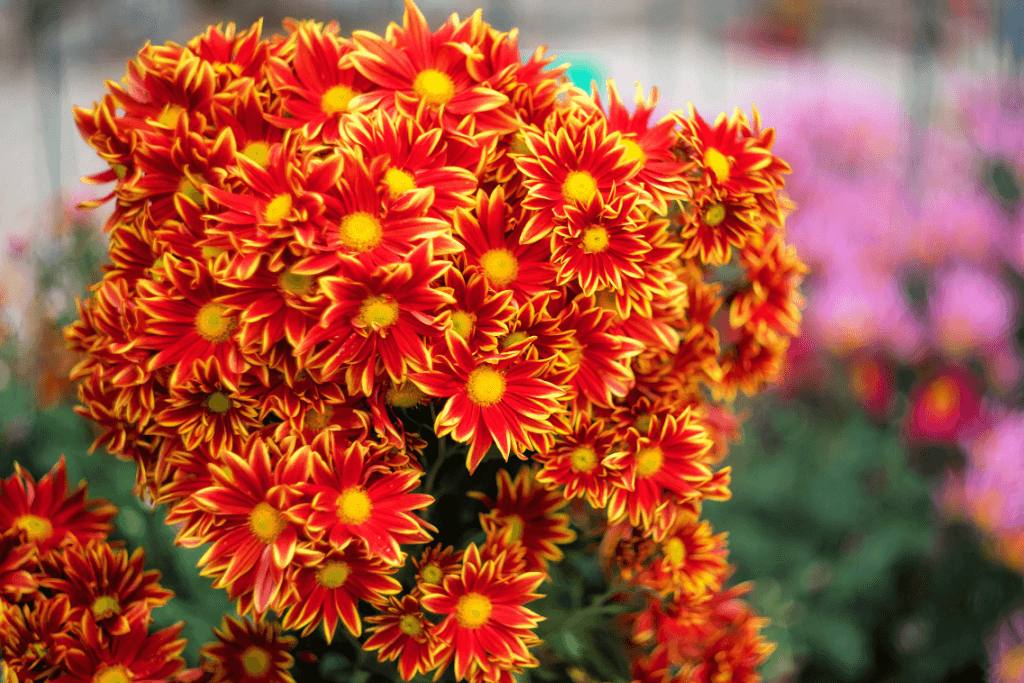
Finally, red chrysanthemums symbolize love and convey the flower language of “I love you.” Kimonos frequently feature bright red chrysanthemum patterns, which are popular among young individuals. Bouquets in October often incorporate vibrant red flowers, as they typically bloom during the early part of the month.
Do people get tattoos of chrysanthemums?
Chrysanthemums have been used in tattoos for many centuries. The flower is a popular design for both men and women alike. In ancient times it was believed that chrysanthemums could ward off evil energy. So those who had dangerous jobs would get chrysanthemum prints or tattoos on them to help protect them.
In modern times a chrysanthemum tattoo can take different meanings. Many get it now to represent elegance or immortality. As chrysanthemums also have healing properties, people commonly get a chrysanthemum tattoo to represent recovery and healing.
All in all, chrysanthemum flowers are gorgeous and loved worldwide. Japan, in particular, has placed great importance on this flower for centuries. Do chrysanthemum flowers hold cultural significance in your country? If they do, let us know in the comments below!

Discover authentic flavors with Sakuraco
Get Sakuraco 

Discover authentic flavors with Sakuraco
Get Sakuraco 
Related Articles

Mount Fuji Snacks That You Need to Try This Summer!
Mount Fuji, Japan’s highest and most iconic peak, has long served as a muse not just for artists and poets, but also for confectioners. Its symmetry and snow-capped grandeur make it an ideal motif for culinary artisans nationwide. These treats capture the spirit of Fuji in edible form, reflecting regional ingredients, seasonal symbolism, and time-honored techniques.

Okinawa City is Home to Southeast Botanical Gardens!
The Southeast Botanical Gardens in Okinawa are one of the island’s most beautiful and relaxing destinations. In Okinawa City, they offer a lush escape filled with tropical plants, ponds, animals, and seasonal displays.

Mount Fuji Tour: Great Adventures Await You This Summer!
Mount Fuji is one of the most famous landmarks in Japan. People worldwide visit to see its beauty and enjoy exciting yearly outdoor activities!

Mikoshi: Why Are These Portable Shrines So Important?
Japan’s summer festivals are known for their energy, color, and tradition. And at the heart of many lies the mikoshi.



